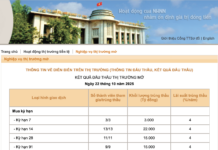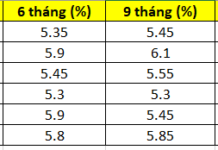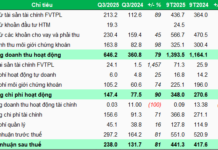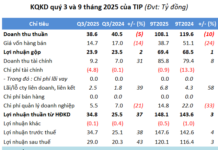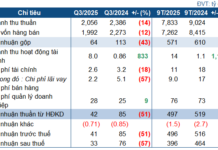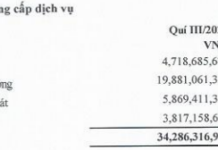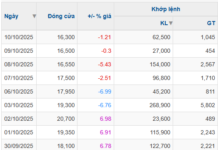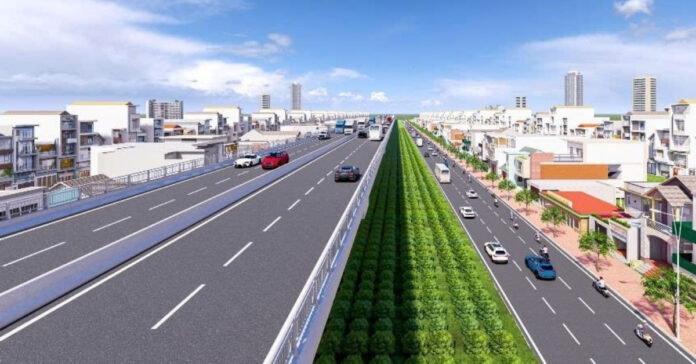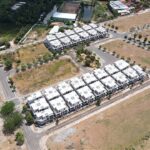Ho Chi Minh City is currently in the process of researching and finalizing the pre-feasibility reports for 5 crucial BOT projects aimed at upgrading and expanding its key gateways. These projects are designed to enhance the city’s transportation infrastructure and improve regional connectivity.
The 5 projects encompass the following routes: National Highway 1 (from Kinh Duong Vuong Street to the border of Long An province); National Highway 13 (from Binh Trieu Bridge to the border of Binh Duong province); National Highway 22 (from An Suong Intersection to Ring Road 3); North-South Axis Road (from Nguyen Van Linh Street to Ben Luc-Long Thanh Expressway); and Binh Tien Bridge-Road (from Pham Van Chi Street to Nguyen Van Linh Street).
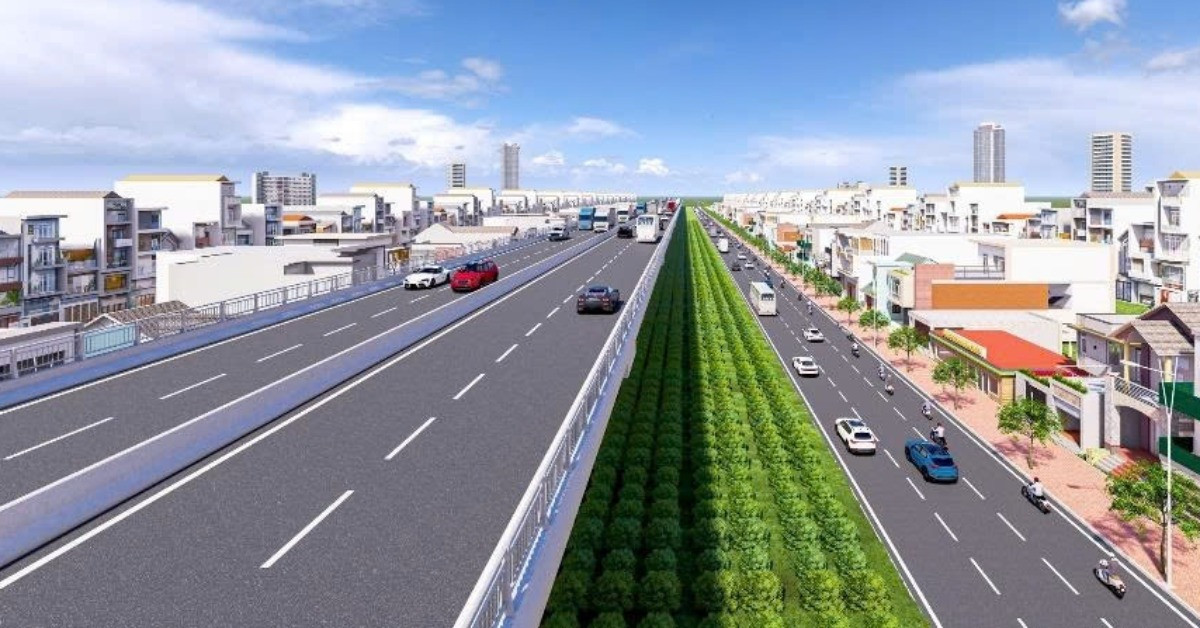 The proposed BOT project on the existing road, with the elevated option, is expected to optimize traffic flow by reducing intersections and conflicts. Image credit: Ho Chi Minh City Department of Transport. |
3 Elevated BOT Projects Require a Combined Investment of Over VND 35,000 Billion
National Highway 13 Expansion Project (in Thu Duc City): This vital route, located at the northern gateway of Ho Chi Minh City, often experiences congestion due to the limited capacity of its infrastructure.
According to the pre-feasibility study report, the gateway axis is 5.95 km long (from Binh Trieu Bridge to the border of Binh Duong province) and currently ranges from 19 to 26 meters in width, featuring 10 intersections (including 2 grade-separated intersections and 8 at-grade intersections).
The adjusted master plan for Thu Duc City, which is currently under review by the Ministry of Construction, proposes transforming National Highway 13 into a high-speed route with a width of 60 meters.
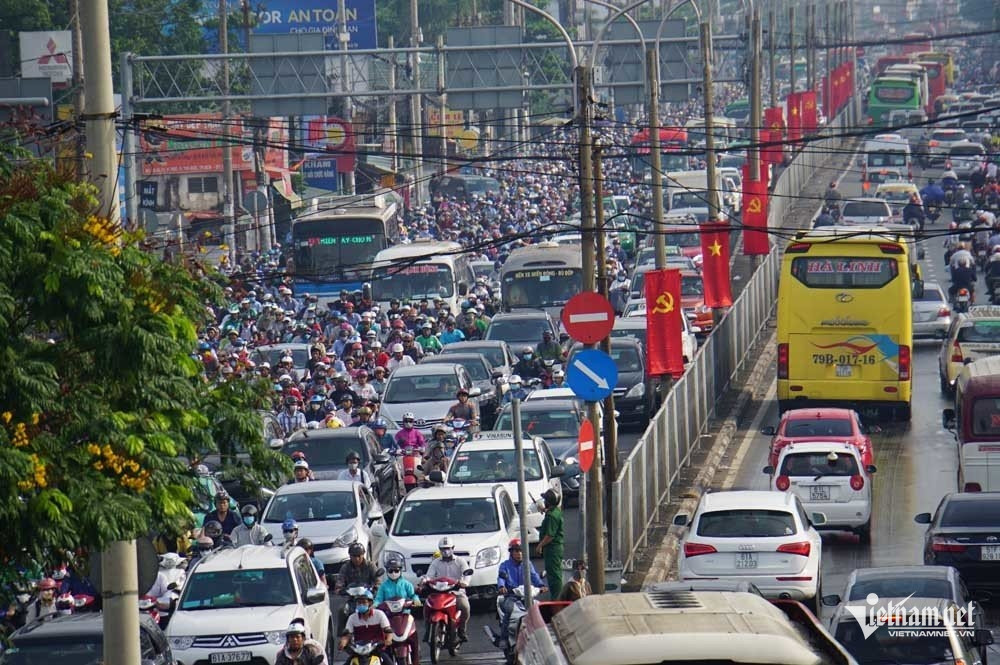
National Highway 13 in Thu Duc City frequently experiences traffic congestion due to overcapacity. Image: Tuan Kiet. |
After comparing the two options of a ground-level road and an elevated road (viaduct), the consulting firm concluded that constructing an elevated road spanning 3.7 km from Binh Trieu Intersection to Binh Phuoc Intersection is the most feasible solution.
The elevated road will feature 4 lanes with a design speed of 80 km/h, accompanied by two parallel roads underneath, each comprising 3 lanes with a design speed of 60 km/h. Additionally, tunnels will be built at Binh Loi and Binh Phuoc Intersections to facilitate two-way traffic flow.
The preliminary investment for this project is estimated at nearly VND 20,000 billion, with land clearance costs accounting for more than VND 14,500 billion.
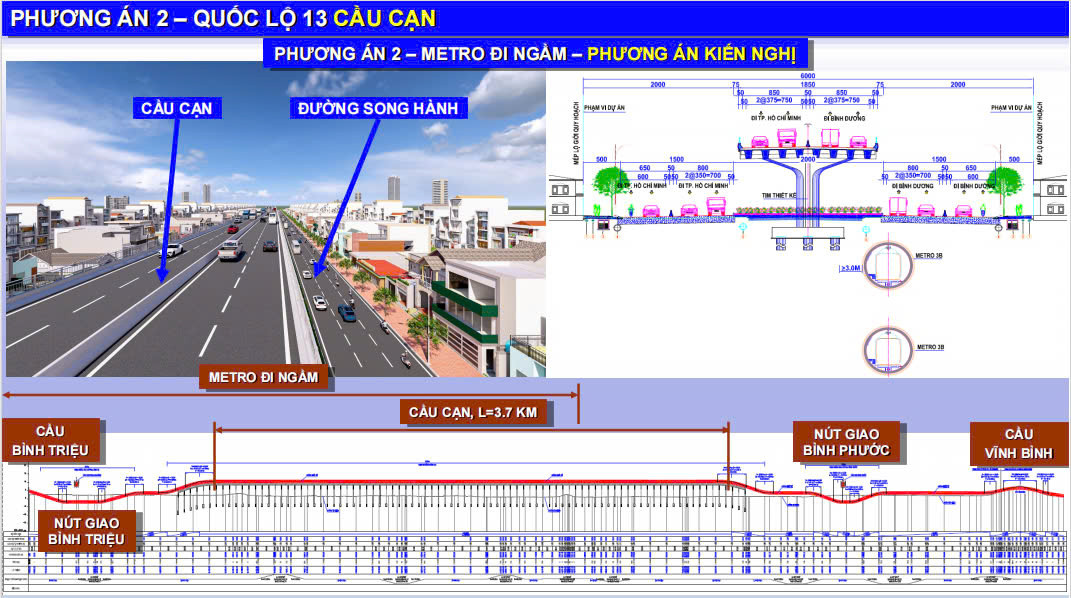
The National Highway 13 expansion project, with an elevated road option, carries a total investment of nearly VND 20,000 billion. Image credit: Ho Chi Minh City Department of Transport. |
Compared to the ground-level option (with a total investment of VND 18,296 billion), the elevated road entails higher construction costs (approximately VND 1,339 billion). However, it is considered a more optimal long-term solution due to reduced intersections with existing roads, resulting in smoother traffic flow.
North-South Axis Road Project: The pre-feasibility study report for this project covers a total length of 8.6 km, with a cross-section width of 60 meters designed for high-speed traffic. The route includes 7 intersections, consisting of 4 grade-separated intersections and 3 at-grade intersections.
After evaluating various options, the consulting firm recommended constructing an elevated road with a total investment of nearly VND 8,500 billion, which is approximately VND 1,000 billion more than the ground-level option. However, this elevated road option minimizes intersections with existing roads.
The elevated road is designed with 4 lanes, a speed limit of 80 km/h, and a lane width of 3.75 meters. The parallel roads will have a design speed of 60 km/h and a lane width of 3.5 meters.
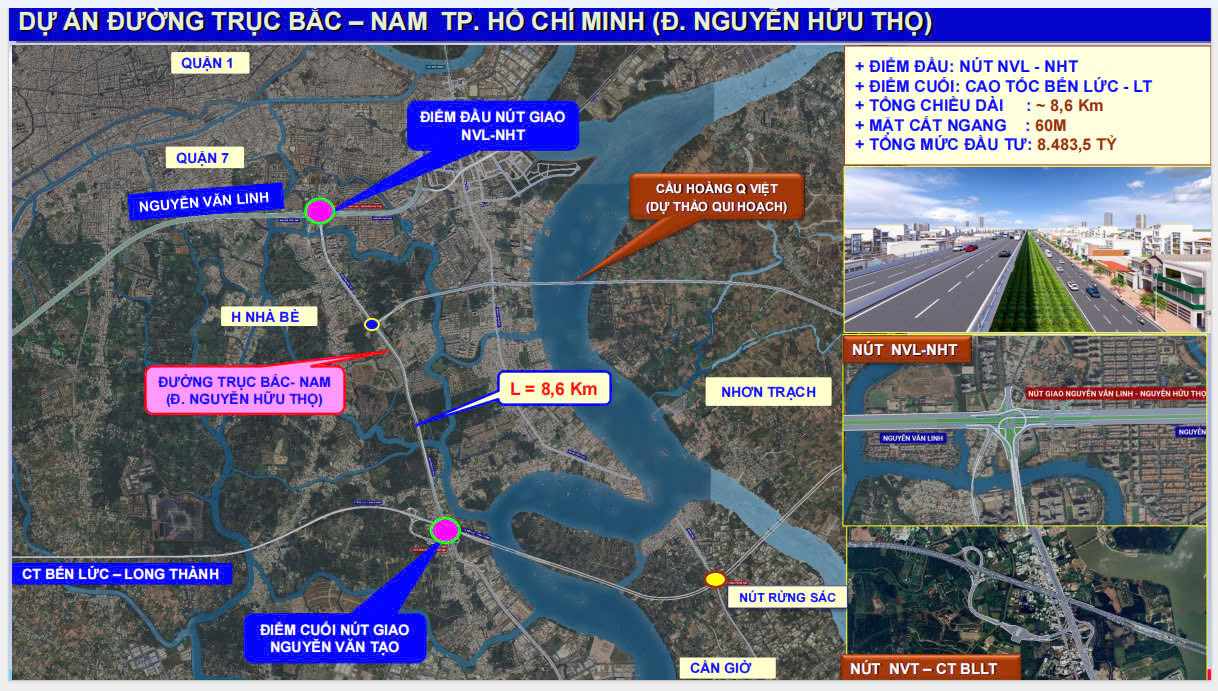
The proposed North-South Axis Road is designed as an elevated road with an investment of VND 8,483 billion. Image credit: Ho Chi Minh City Department of Transport. |
Upon completion, this project will establish a radial road connecting Ring Road 2 with Ring Road 3 and, eventually, Ring Road 4. It will cater to the transportation needs between the southern gateway of the city and the provinces of the Mekong Delta and the Southeast region, as well as facilitating access to the system of seaports and the Long Thanh International Airport.
Binh Tien Bridge-Road Project: According to the pre-feasibility study report, this project spans a length of 3.66 km, starting from the Binh Tien-Pham Van Chi Intersection (in District 6), crossing Vo Van Kiet Avenue, Tau Hu Canal, Cay Sung Street (in District 8), Kênh Đôi, and Ta Quang Buu Street, before connecting to Nguyen Van Linh Avenue (in Binh Chanh District).
To ensure smooth traffic flow, the entire route is proposed to be constructed as an elevated road (viaduct) with a width ranging from 30 to 40 meters, accommodating 4 to 6 lanes.
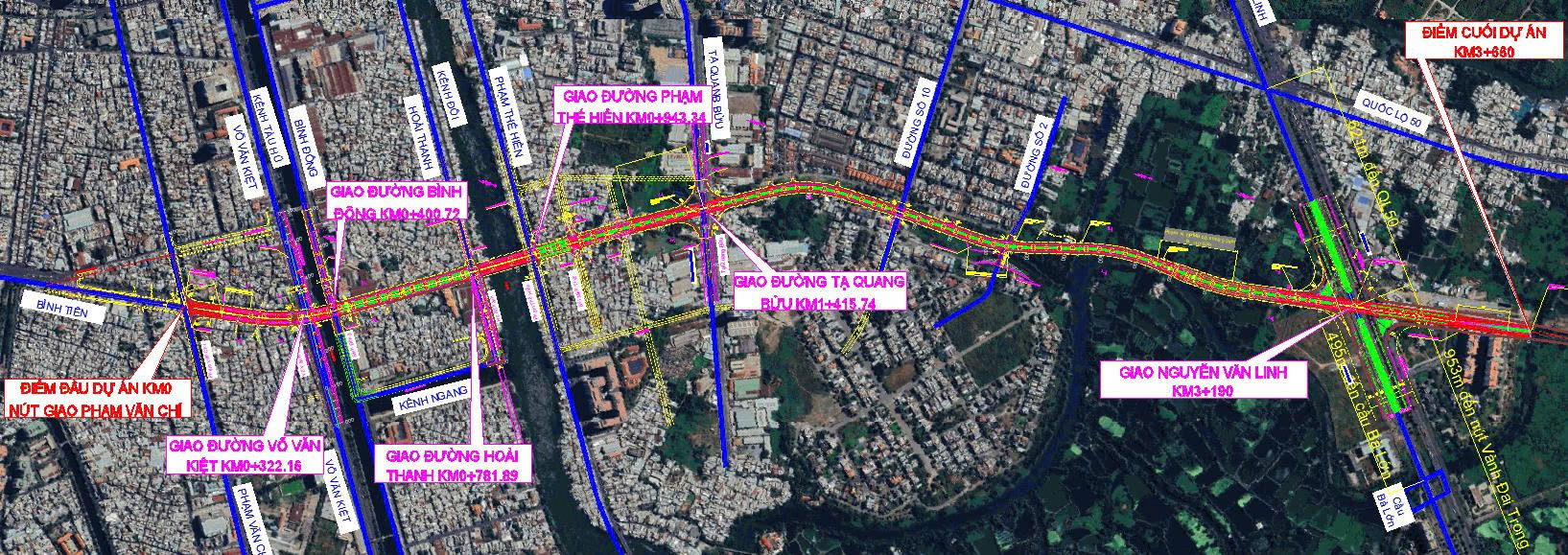
Schematic diagram of the Binh Tien Bridge-Road Project. Image credit: Ho Chi Minh City Department of Transport. |
The elevated road will include connecting branches to Vo Van Kiet Street, Binh Dong Street, Hoai Thanh Street, Ta Quang Buu Street, and Nguyen Van Linh Street, ensuring seamless connectivity with existing roads.
The project’s total investment is estimated at approximately VND 6,800 billion, including construction costs of VND 2,529 billion and land clearance costs of over VND 2,878 billion.
Once completed, the Binh Tien Bridge-Road will provide a new route from the center of Ho Chi Minh City to Nguyen Van Linh Avenue, facilitating connections to National Highway 50, National Highway 1, Ben Luc-Long Thanh Expressway, and Ring Road 3. This project will not only alleviate traffic congestion in the central area but also boost regional connectivity, particularly with the provinces of the Mekong Delta.
Tuấn Kiệt
Is Agricultural Land in Ho Chi Minh City Still an Attractive Investment Prospect?
The pressure to clear inventory and slash prices is mounting for investors in agricultural land on the outskirts of Ho Chi Minh City. However, this urgency to offload investments is not reflected in the market’s transaction volume. As land investors fret over potential losses, service businesses operating on this land are breathing a sigh of relief, thanks to the newfound legal framework that has unlocked opportunities.
The Great Land Use Fee Confusion: When Agencies Disagree, Citizens Pay the Price
The Institute of Resource Economics and Environment has pointed out a discrepancy between Decision 79 by the Ho Chi Minh City People’s Committee and Document 10640 issued by the Ho Chi Minh City Tax Department. The institute believes that there is a lack of alignment in interpretation, implementation, and application between the two documents, ultimately putting citizens at a disadvantage.
The City’s Revitalization Project: Transforming 4,000 Old Apartments into a New Residential Haven
The Ho Chi Minh City Construction Management and House Development Centre is set to renovate almost 4,000 apartments across the city, according to plans laid out by the People’s Committee of Thu Duc City and relevant districts. This large-scale refurbishment project will provide much-needed relocation accommodations for residents.









